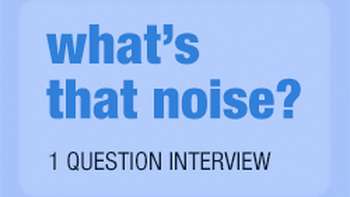I’ve been fighting the urge to just quote John Hoffman from when I interviewed another one of his bands, The Mimes, earlier this year, because I think he described his songwriting style really well in it. Instead, you get a vague, shameless plug, though I’ll circle back after more explanation.
On their latest offering, Vacation hasn’t wildly changed. Existential Risks and Returns is similar to the sound they’ve developed over some 12 years at this point. It’s DIY and grounded, but it ain’t exactly textbook punk. It’s fuzzy, quirky and there are a lot of dynamic shifts. Sometimes it’s even kind of slow. It draws influence from a lot of ‘90s alt-rock, but it’s a modern take instead of a rip-off. I hear Black Francis weirdo melodies, Nirvana fuzz, and then a blast of power-pop that gets stuck in your head. Sometimes the riffs are chunky and angular, but more often they’re soothing and energizing. Sometimes they escalate to almost sappy and joyful (which is pretty much the opposite of ‘90s alt-rock) but with a subtly defiant edge. It’s buoyant: it bobs in the current but it never wallows into the depths.
If I had to pick singles to define the band’s sound, I’d use a song like “Ripe.” It’s emotional, driving, and memorable. The guitar tones are mostly bleak, but with radiant moments that really shine in the opening and the chorus. It uses a time-tested pop structure, but it’s sliced and diced together with all kinds of deeper influence. “Luminary Jerry” starts with sunny pop, then builds to powerful but harsh shouts at the chorus, then back to sunshine. “User Error” feels almost instrumental: arranging the melody in repetitive bass hooks and then using vocals as an accent to the climactic, surf-like energy. The band has a unique ability to shift their melodies across different tones. “Liberty Tax Statue Man” is alternately staccato and singsong at different times and it never sounds abrupt or awkward. It’s punk, it’s pop, it’s weird, but it works.
While I think “Ripe” showcases the band’s sound well, it’s not to say the other 11 songs fit the same playbook though. There are slower songs, sometimes using that shifting fuzz element for mood, at other times letting the rhythm section set the tone. It’s dynamic, yet unified. Emotional, yet contained. It’s often in the midtempo range, shifting back and forth without getting lost.
So, to circle back and reveal the big spoiler: it’s what Hoffman called, “Kind of like Pacific Northwestern garage rock.”









